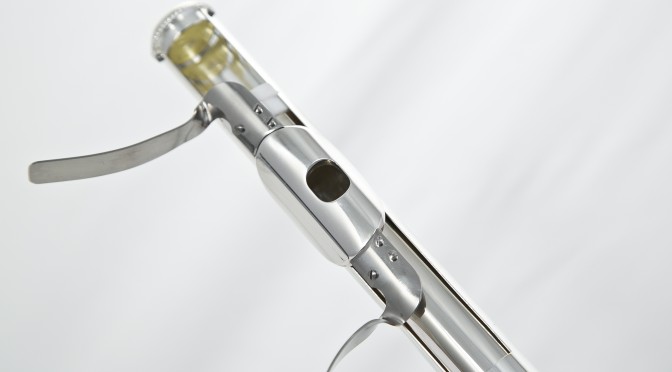Flutes
-
In My Opinion
For many years now there has been an issue in the British flute world that has been allowed to continue unchecked and I feel that is time that someone with a contrasting view voices an opinion.
-
Scales: An Incomplete Look at What Every Flutist Should Know
What’s in a scale? More to the point, what’s in “the Cooper scale”? This short primer on scale—and why every flutist needs to understand its importance— includes a heartfelt appeal for the open information-sharing that defined the character of the late Albert Cooper.
-
Ian McLauchlan’s Guide To Making A Headjoint: Finishing the Headjoint
Probably the most important stage of making a headjoint is cutting the embouchure hole. It is this that really makes it work or not.
-
Ian McLauchlan’s Guide To Making A Headjoint: The Riser
In my first two articles in this series I talked about how I make a headjoint tube and lip-plate. This article covers the riser: a part that you don’t really see but that is an important part of the headjoint. The riser (also called the chimney, or by some American flutemakers, the ‘wall’) gives the…
-
The Ultimate Flute Headjoint?
Robert Dick is an internationally renowned American flautist and composer nicknamed ‘the Hendrix of the flute’ due to his ability to create effects similar to electric guitar and push the boundaries of conventional flute playing. He was inspired by Hendrix’s creativity from a very young age and desired to match the sound and abilities of…
-
Ian McLauchlan’s Guide To Making A Headjoint: The Lip-Plate
In part 1 of this guide, I explained how tubes for handmade flute headjoints are made. In this article, I’ll talk about the method I use to make a lip-plate.
-
Alternative Crowns & Stoppers: A Resounding Leap Forward?
Recently there has been some debate over whether the cork assembly inside the headjoint makes a difference to the way the flute plays and feels. Many headjoint makers and flute enthusiasts have been experimenting with different materials and set-ups, and several alternatives are already available through specialist shops. In this article I want to demystify…
-
Ian McLauchlan’s Guide to Making A Headjoint
What I am intending to do over my next few blog posts is to describe the process involved in producing a headjoint from tubes and sheet, through to the final finished product. I am not for one moment suggesting that this is the only way of making a headjoint, but it is one that works…
-
Sticky Pads: A Perennial Problem
Sticky flute pads are something that nearly all flute players have to put up with. Here are some tips on how to reduce stickiness and noise.
-
Open G#: To open, or not to open?
If you look at your flute, you will find that all the keys are sprung open except for D#, G# and the trill keys. The reason for this is that Theobald Boehm, the inventor of the mechanism on the modern flute, designed the keywork on the principle that all the keys should be open, and…








